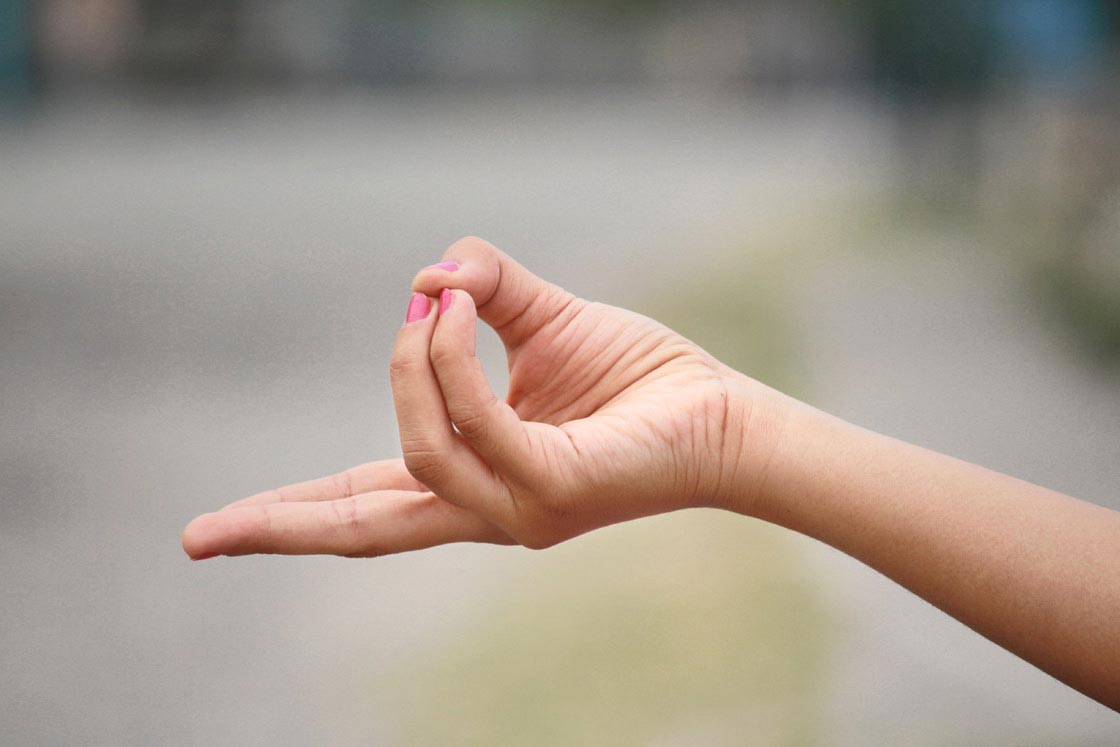
In yoga, mudras are special hand gestures that help control the body’s energy and are used in meditation and breathing exercises. Prana Mudra is one of these gestures that helps us use our vital energy, called Prana.
Doing this simple gesture can make you feel more energetic and calm your mind. When you hold your fingers in the Prana Mudra position, it helps the energy flow smoothly through your body, making you feel refreshed.
What is Prana Mudra
Prana Mudra, called the ‘life force seal,’ is a special hand gesture used in yoga and meditation to boost our life energy, or Prana. To do it, touch the tips of your little finger, ring finger, and thumb together, and keep your index and middle fingers straight. This helps wake up hidden energy in your body and balance the elements of earth, water, and fire.
This position of fingers in prana mudra directly impacts on;
- The flow of breath and the heart-rate
- Circulatory system
- Body temperature
- The nervous system, to evokes a feeling of groundedness
Besides, eyes, skin, and other sensory inputs also contain Prana Vayu, hence Prana mudra imparts ‘Pran (life-force)’ to these organs.
Prana mudra gives a sense of calmness in the body and mind, it’s also known as peace mudra or Shanti mudra.
When by the practice of prana mudra, Prana starts flowing without obstruction, then yogi becomes aware of subtle body flows. It develops the awareness of nadis and chakras.
Prana Mudra & Five Elements
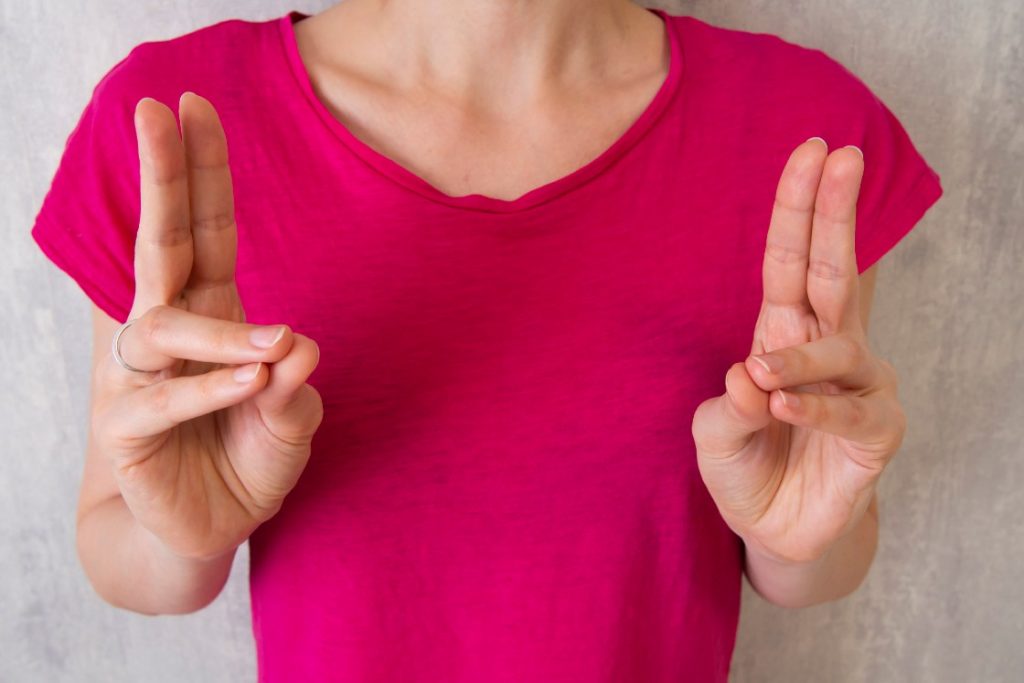
A balanced proportion of 5 elements of the body is necessary for a healthy body. In Prana Mudra, water, earth, and fire are combined to activate pranic shakti.
- The little finger represents water element shows the fluidity
- The ring finger represents the earth element shows stability
- And thumb represents fire element shows vigor and has a power of transformation
In prana mudra, earth, and water element quality are put together and when it combines with the fire element, it gives rise to prana shakti. This prana shakti manifests in the form of the combined quality of water, earth, and fire i.e better circulation, structure, and vitality.
Prana mudra also is known as the Kapha Karak mudra because it increases Kapha humor of the body. In Ayurveda, the earth and water element makes Kapha dosha. These 2 same elements are combined in Prana mudra, hence this alternative name.
On the other side, when the fire element gets in touch with the water, then it balances the excessive fire or Pitta dosha or Jathragnee. In this way, Prana Mudra also is known as Pitta Nashak Mudra.
How to Do Prana Mudra(Steps)
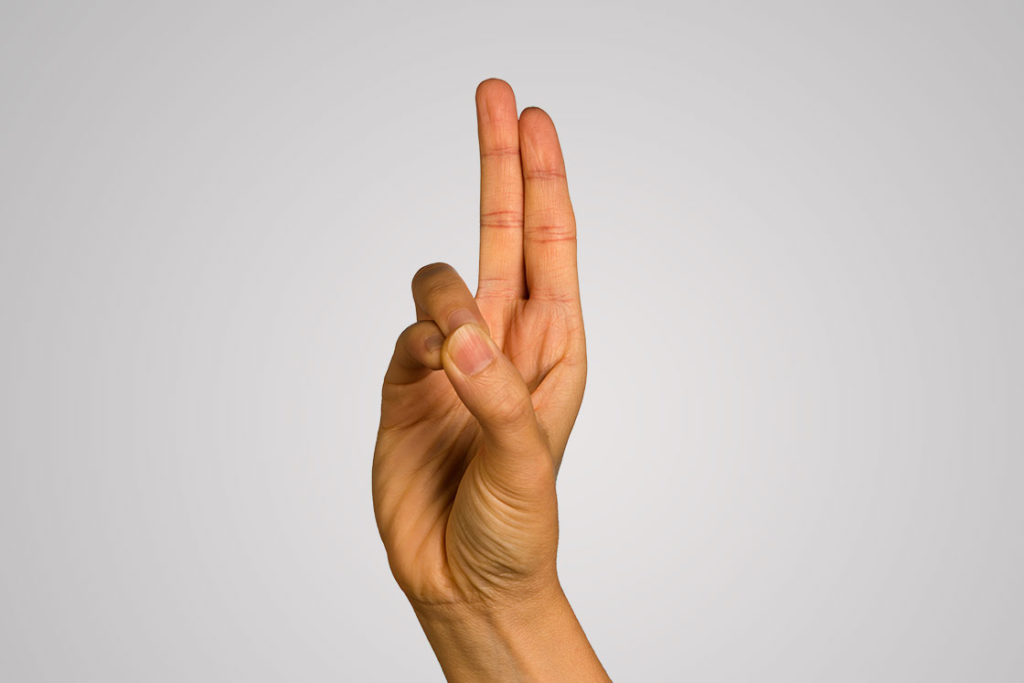
- Sit in a comfortable meditative posture, i.e. Padmasana, Siddhasana, Vajrasana, or Sukhasana.
- Gently close your eyes and breathe deeply for a few rounds. Concentrate on the air entering and exiting through nostrils.
- Bring little and ring fingers of both hands together and bend them towards the thumb. Gently press these fingertips against the thumb tip.
- Keep the rest two fingers, i.e. index and middle straight and lightly stretched.
- Hold both hands fingers in this position without any movement for at least 15-20 minutes.
- Release the mudra by gently stretching fingers straight and rest in sitting posture.
Time & Duration
Ideal Time: Practice Prana Mudra on an empty stomach, ideally at sunrise.
Duration: Aim for 15 to 45 minutes per session.
Frequency: Daily practice is recommended for best results. Avoid practicing at night as it may disrupt sleep.
Precautions
- Start with short sessions and gradually increase duration.
- Avoid straining your lungs, especially during breath control practices.
- Wear loose-fitting clothes for comfort.
- Do not practice late at night to prevent sleep disturbances.
- Consult a healthcare professional if you have any health conditions.
Side Effects
However Prana mudra is beneficial in all ways, but practicing it excessively and wrong time may bring following effects;
- Increases obesity – Ayurveda tells about three Prakriti – Vatta, Pitta, and Kapha. Prana mudra increases the Kapha element and slows down the fire element, which may result in increased body weight if practiced for long durations at one sitting.
- Avoid practicing after sunset – Practicing prana mudra at night may cause a lack of sleep as it triggers all the metabolic activities of the body and night is the time when it comes to shutting down the processes. So it is not recommended to practice it at night.
Prana Mudra in Pranayama
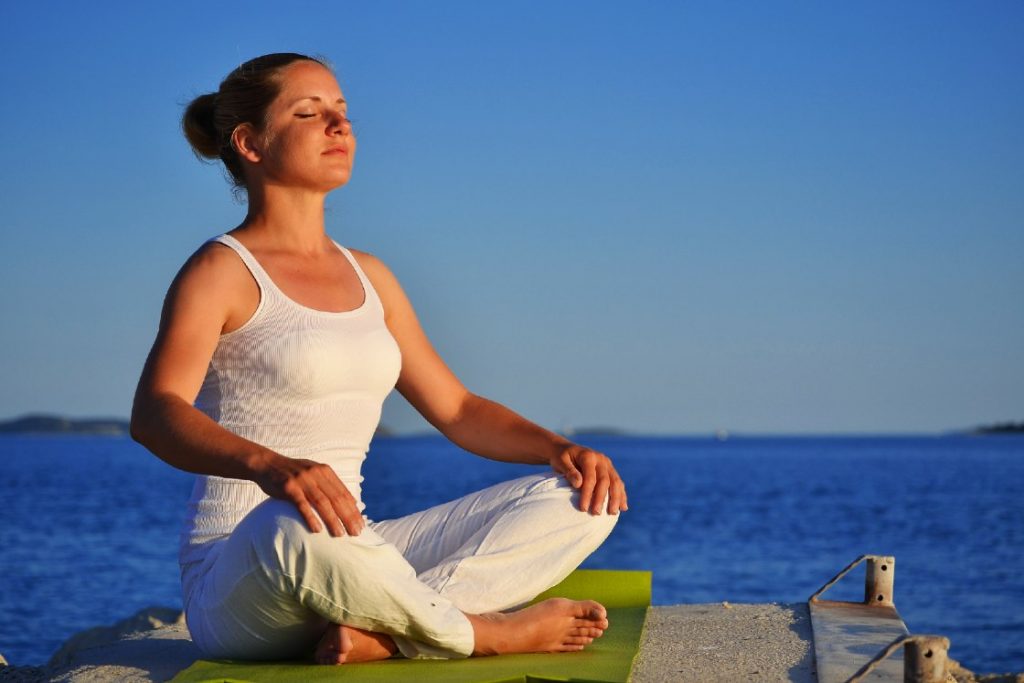
Besides practicing prana mudra in a simple sitting position, it can be practiced in guided breath awareness to lift the prana level into higher chakras. It’s called prana mudra pranayama practice.
- Begin with both your hands in the Prana mudra position.
- Without straining the chest muscles, inhale and exhale deeply for a few rounds. At the end of complete exhalation, perform the Mula Bandha by concentrating on the root chakra.
- Try to keep the air outside as long as you are comfortable and then slowly release the Mula bandha.
- Now, gently start inhaling as deep as possible while expanding the chest to let the lungs filled with fresh air.
- Coordinate your abdominal inhalation movement with the lifting of hands in [prana mudra] slowly from kneecap to the navel region. With this movement of hands, visualize the flow of prana from the Muladhara chakra to Manipura Chakra.
- In the next inhalation, expand your chest further with upward movement of hands till they reach in front of the center of your chest. Here try to feel the flow of prana Vayu from Manipura Chakra to the Heart Chakra.
- Now draw furthermore air into the chest by raising the shoulder and collarbones in the next inhalation. While raising shoulders, feel prana is moving from Heart to Throat Chakra followed by Ajna Chakra and finally reaching to Sahasrara chakra.
- Concentrate on the Sahasrara Chakra and with closed eyes, visualize the pure light eliminating from the crown of the head. Be in this stage for as long as you are comfortable with the breath held inside and then gently start exhaling. (keeping your lips closed).
This practice of prana mudra with breath awareness and concentration utilize the complete physical posture, hence it’s called kaya mudra (postural gesture) rather than just a simple hasta mudra.
Prana Mudra Benefits
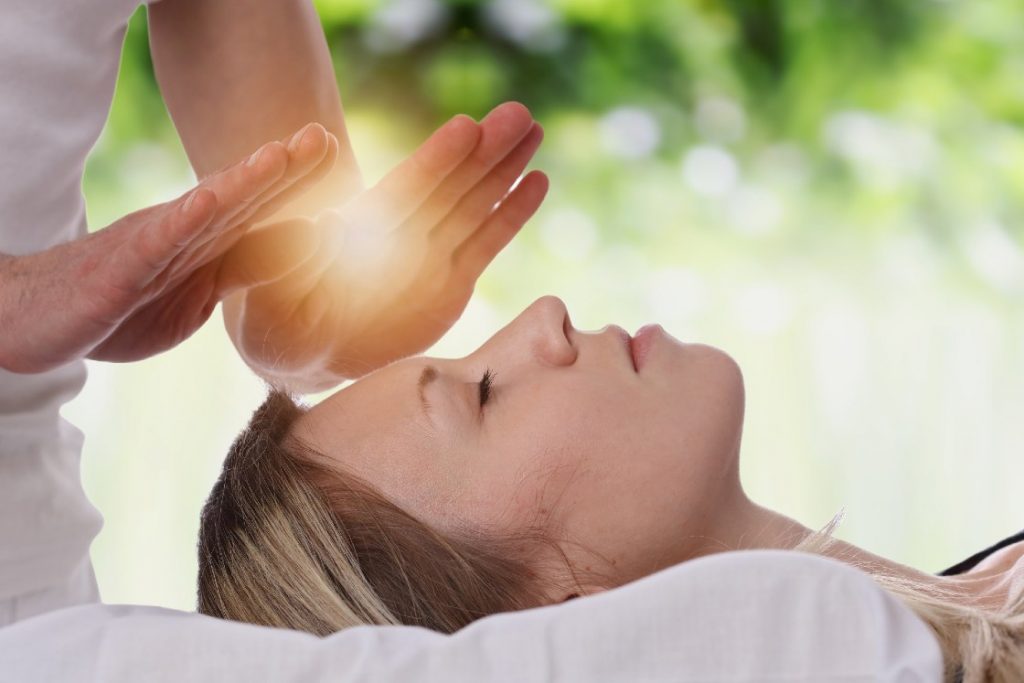
- Activates the pranic energy – Prana mudra is practiced for the invocation of the pranic energy and used to awaken the dormant prana shakti (breathing power) of an individual.
- Remedy in low blood pressure – Prana is the force of life and practicing prana mudra helps in alleviating low blood pressure as it increases the blood flow.
- Prevents hair fall and strengthen hair root – Hair roots weaken by the lake of the earth element in our body. Prana mudra balances this insufficiency of the earth element and this way strengthens hair roots.
- Increase lung efficiency – Prana mudra is an aid to increase the efficiency of lungs as it is related to the breathing exercises.
- Tuberculosis management – This mudra helps you to overcome tuberculosis and prevents its occurrence.
- Controls excessive yawn – If one yawn so much due to lack of energy and deficiency of oxygen in the body, then prana mudra can do wonders for it.
- Removes lethargy – A feeling of low energy can be entirely removed by practicing this mudra as it is directly related to the activation of mooladhara.
- Controls metabolism – This mudra maintains the optimum metabolism of the body and can also be practiced for problems related to the Thyroid.
- Boosts Immunity – Prana mudra helps in giving a boost to your immune system, which is responsible for fighting against diseases, infections, and pathogens.
- Overcome negative thoughts – If your mind is trapped in the cage of negative thoughts, then prana mudra is the ultimate solution to get rid of this negativity and negative thoughts.
- Prana mudra for weakness – It is beneficial in overcoming the weakness in the body. The persons who practice prana mudra twice a day, i.e. at the time of sunrise and sunset, their body kept charged throughout the whole day until they go to sleep. Moreover, it also increases the strength of the body.
- Calms mind and body – Prana mudra calms the mind and gives a feeling of peace as it controls the high metabolism, blood pressure and alleviates the mood, and makes a person more stable in terms of spirituality.
Conclusion
Prana Mudra is a powerful and accessible practice that can significantly enhance your physical, mental, and spiritual well-being. By incorporating this simple hand gesture into your daily routine, you can harness the vital life force within you, leading to a more energized, balanced, and peaceful life.

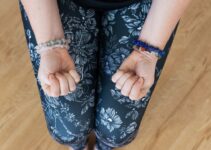
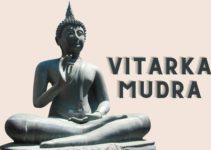


Hi Ashish!
Can you pse suggest a hast mudra for Frozen Shoulders? My left hand is down with this. Also, I am under the category of Pita Doshas.
Thank you
Can Pran Mudra increase BP?
Remedy in low blood pressure – Prana is the force of life and practicing prana mudra helps in alleviating low blood pressure as it increases the blood flow
According to benefits this Mudra is good for low blood pressure. Hence in cases of hypertension, BP will increase.
I would appreciate your comments.
Prana mudra helps in financial balance too. For example, if you are working in a low paying job, then through regular practice of Prana mudra (as per the precepts nicely outlined in this page), you will soon get new job opportunities offering better pay, thus increasing your contentment.
In some websites, it is mentioned that Prana mudra should be avoided by people who have back related problems. But nowhere the reason for this is specified. Can you please tell me the reason? Thanks,
Back problems shouldn’t be a contraindication for Prana mudra. To my knowledge, there is no harm in doing prana mudra for back problems. I am not aware of websites which have mentioned such information.
While doing prana mudra on left hand side ,I can not hold it more than 15 seconds but right hand I can do it .? What does it mean?
Can you tell why can’t you hold it – is it because of some pain sensations you feel on your fingertips or some other parts of the body?
Mudra with the left-hand affects the right side of the body and the right-hand mudra affects the left side of the body (And vice-versa). So it might be a reason that this has a connection with your right side of the body.
To control high blood pressure which mudra is helpful… And i am vaata body type..
Vyana mudra – Control high blood pressure and balances Vata dosha.
I have Vata dosh and having joint pains. Did vayu mudra for 15 days and found it beneficial and stopped it.
Can I start doing prana mudra as I am feeling tired and low in energy most of the time?
Yes, preferably Vayu mudra should be followed by Prana mudra in case one feels tired. Doing Prana mudra balances Kapha dosha which makes one feel nourished, grounded and content.
Vata dominant people can perform Gyan mudra and chin mudra?
Gyan mudra and chin mudra balances the vayu (air) element and the air is main element in Vata dosha so doing these mudras should balance the dominant Vata. You can try these mudras and observe the vata symptoms in the body.
Sir I am a vata dominate person can I use prana mudra, really I love that mudra
Yes, you can do it, prana mudra is good for Vata dosha. Prana mudra increases the earth and water element; combination of earth and water element makes Kapha dosha – Therefore, this mudra is called Kapha karak mudra.
Vata dominance is responsible for instability of mind (as you’re) – whereas kapha dominance (which comes from prana mudra) brings stability and calmness to the mind. So prana mudra complements the influence hyper-vata.
sir when i do anulom vilome even 4minutes 3 or 4 day . my experience that i suffer a breath problem like my brain oxygen supply delays or cut . please advise me .
Hi
I wonder if I can practice two mudras one after the other.
I am VATA E PITA, what do you advise me.
Thanks
I’m having heavy gastritis and hypothyroid which mudra’s can be helpful sir. prana mudra and Vayu panda mudra can be done which duration and timing can be helpful sir?
Prana Mudra and Vayu mudra would helpful. Do these mudras at least 15 to 20 minutes in morning and evening time.
Can prana mudra help with removing blood clots after a c section delivery of a baby?
Generally, Prana mudra is considered effective to make blood flow freely and remove a blood clot from inside an artery or vein. But I am not sure whether it can be practiced after the c section delivery of a baby. Please do let me know about its effectiveness in post-pregnancy if you consult an expert.
Dear Sir, can we do prana mudra after walking about 40mins?
Yes, it can be done after walking.
Hi!
I was advised by Ashish for Chronic Naval Displacement (Nabhi Chakra Fall) to try Prithvi & Shankha Mudra. I do try and felt good but feeling lots of heat in my stomach.
I am also falls in the category of Pitta Dosha and 48 Years old male.
Thank You
Kamal
Hello Kamal, I am not sure if these mudras should show heat up effects, though, if this is the case (that I think because of pitta dosha) I recommend you to do simple cooling pranayama breathing like sitali and sitkari.
Hi
I did chakra mudra for 2 days & started getting severe pain in the pelvic area exactly at the center below the navel on Mooladhara point, want to understand any realization between chakra mudra & pain below this point, I was facing lower back problem & the hip problem for a longer time.
Hello, can you tell which chakra’s mudra you referring to that caused severe pain in the pelvic area? However, there are different mudras for each of the 7 chakras you can try!
Why breathing troubles while doing Apana Vayu mudra? Plz reply can we practice Apan Vayu mudra daily
It might trouble because of the specific constitution of a dosha in the body (like excess of Vata constitution). However, Apana Vayu Mudra balances all 3 doshas but it may take some time. Meanwhile, you can follow these cues while doing Apana Vayu Mudra;
1. Don’t hold your fingers in it for a longer duration.
2. Prior to Apana Vayu mudra, perform Prana mudra.
3. While doing Apana Vayu mudra, do it with one hand and Anulom Vilom with another.
This will help you breathing smoothly while doing it.
Mr.Hemanth,
Being a senior citizen, most of the ASANAS, difficult to practice,
So can I practice only mudras? Then, can I start doing for 5 minutes initially, then increase the duration? should be done twice a day?
Thanks,
Your guidance will be appreciated.
Yes, that’s a great choice Mr.Balasubramanian! If you feel Asanas difficult to practice, only mudras practice can benefits you a lot. However, if you can try, do 5 minutes simple stretches on the chair yoga (it’s more relaxing). After that mudras practice will be more rejuvenated for you. I hope it will help.
should we practise prana mudra for 10 minutes after completing apana mudra for 20 minutes ?
Yes, you can practise these two mudras in a sequence to balance Prana and Apana Vayu in the body.
I THINK THIS VIEW IS NOT CORRECT.
WE SHOULD DO PRAANA MUDRA FIRST,
AND THEN GO TO APAAN VAAYU MUDRA.
Dear Venkata, you can decide which Mudra should be done first, based upon what your practice is meant for. For therapeutic purposes like when having digestive issues, Apana Vayu mudra should be followed by Prana Mudra.
However, for meditation purposes, a good grounding sense can be developed by practicing Apana Vayu Mudra at the end.
What result I’ll get when I perform prana mudra along with meditation?
With Prana mudra, you will more likely to feel the sensation produced in body in the early stage of meditation. However, In comparison to Prana Mudra, Gyan mudra is much recommended for meditation because in meditation Tamas guna should be dominant not Rajas guna (Prana mudra has more Rajsic quality).
If you have some experience with Prana mudra in meditation, please share it with us.